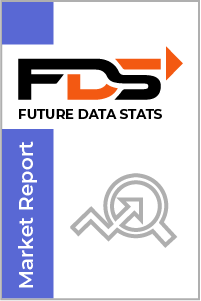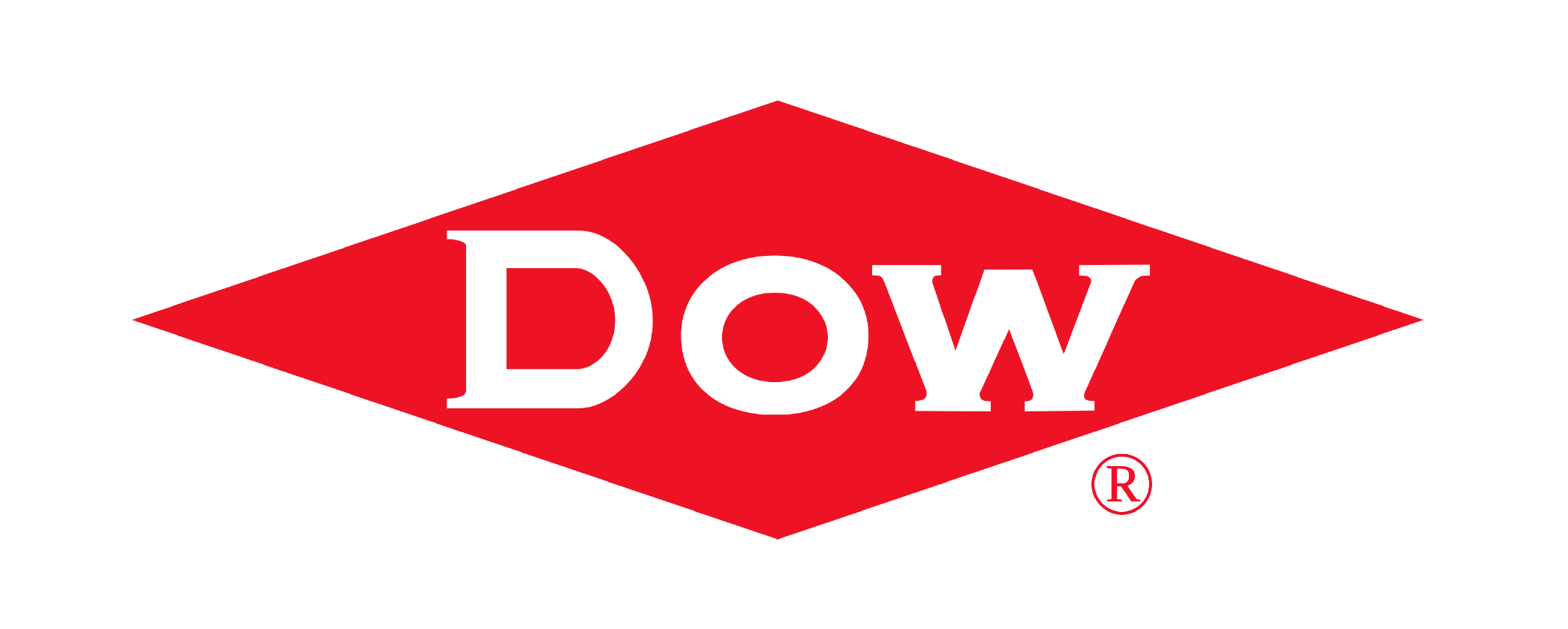The global Connected Car Services Market size was valued at USD 53.2 Billion in 2024 and is projected to expand at a compound annual growth rate (CAGR) of 15.3% during the forecast period, reaching a value of USD 166.8 Billion by 2032.
The "Connected Car Services Market Research Report" by Future Data Stats provides an in-depth examination of the market landscape, utilizing historical data from 2021 to 2023 to identify key trends and growth patterns. Setting 2024 as the foundational year, the report explores consumer behavior, competitive forces, and regulatory frameworks that influence the industry. It transcends basic analysis, delivering a thoroughly researched forecast extending from 2025 to 2033. By employing sophisticated data analysis methodologies, the report not only outlines the market's growth trajectory but also uncovers emerging opportunities and foresees potential obstacles, empowering stakeholders with vital insights to adeptly navigate the changing market landscape.
MARKET OVERVIEW:
The Connected Car Services Market refers to the ecosystem of digital and network-enabled services that enhance vehicle functionality beyond traditional transportation. These services include real-time navigation, vehicle diagnostics, remote assistance, and in-car entertainment, all of which rely on internet connectivity to improve safety, convenience, and user experience. Automakers, tech firms, and service providers collaborate to deliver these features, which are increasingly embedded in new vehicles or offered through aftermarket solutions. For market purposes, this segment represents a rapidly growing area within the automotive and mobility industry, driven by advancements in 5G, IoT, and cloud computing. As consumers seek smarter and more personalized driving experiences, companies view connected car services as a path to generate recurring revenue, improve customer loyalty, and differentiate their offerings in a competitive landscape.
MARKET DYNAMICS:
Companies in the Connected Car Services Market are embracing several recent trends that reflect evolving consumer expectations and rapid tech innovation. Automakers are increasingly integrating voice-controlled assistants, over-the-air software updates, and AI-powered driver alerts to create more intuitive driving experiences. The rise of subscription-based models for services like advanced navigation and infotainment is gaining popularity, offering flexible revenue streams and keeping vehicles continuously updated without requiring new hardware. Looking ahead, the market shows strong potential as advancements in autonomous driving and 5G connectivity unlock new service opportunities. Businesses are exploring how connected cars can integrate with broader smart city infrastructure, enabling seamless traffic management, predictive maintenance, and real-time communication with road systems. As vehicles become more data-centric, there's growing business scope in analytics, cybersecurity, and cloud-based platforms that support long-term digital engagement with drivers and fleet operators.
Consumers are increasingly seeking smart technologies that provide real-time data, enabling them to make informed decisions while driving. Innovations such as advanced driver-assistance systems (ADAS) and seamless connectivity with smartphones play a crucial role in attracting tech-savvy customers. Additionally, the rise of IoT (Internet of Things) applications in vehicles enhances the overall driving experience, further propelling market growth. However, several factors may restrain the expansion of connected car services. High implementation costs and concerns regarding data privacy can deter manufacturers and consumers alike. Many potential users remain skeptical about sharing personal information, which can hinder adoption rates. Nevertheless, significant opportunities exist for companies willing to innovate and address these challenges. Collaborations between automakers and tech firms can lead to the development of secure, user-friendly systems that enhance connectivity and improve customer trust in connected car technologies.
CONNECTED CAR SERVICES MARKET SEGMENTATION ANALYSIS
BY TYPE:
Embedded systems dominate the connected car services market as automakers increasingly integrate them directly into vehicles during manufacturing. These systems eliminate the need for external devices and allow for seamless, always-on connectivity. Manufacturers prefer embedded solutions because they enable better control over updates, diagnostics, and security. Regulatory mandates in regions like Europe and the U.S. also support this growth, especially for emergency services like eCall. Tethered systems still hold relevance in regions with lower technological infrastructure or price-sensitive markets. These setups rely on smartphones or other mobile devices to deliver connectivity to vehicles. While cost-effective, tethered systems often struggle to deliver the seamless user experience that embedded options offer. However, they remain a practical solution for retrofitting older vehicle models with basic connected features.
Integrated systems, which combine the strengths of embedded and tethered solutions, are gaining momentum. This hybrid approach allows users to switch between in-vehicle connectivity and mobile networks, depending on need. It provides flexibility, especially in scenarios requiring app-based controls or cloud synchronization. Automakers are increasingly exploring this path to offer adaptable and future-ready service models.
BY SERVICE:
Navigation services continue to lead the segment, largely due to their critical role in route optimization, traffic updates, and real-time alerts. Drivers rely heavily on accurate, dynamic navigation for fuel efficiency and time management. With growing congestion in urban areas, this service remains indispensable across both personal and commercial vehicle markets. Safety and security features such as automatic crash notification, roadside assistance, and driver assistance are becoming standard in modern vehicles. These services not only enhance user safety but also appeal to insurers and regulators aiming to reduce accident severity. As consumer awareness around road safety grows, demand for these services has surged, making them a core value proposition for connected car platforms.
Entertainment and connectivity features, including multimedia streaming and access to social media apps, are rapidly evolving. Consumers increasingly expect in-vehicle experiences to mirror their smartphones or home devices. Automakers are responding by partnering with content platforms to deliver a rich, personalized media experience. While less critical than safety or navigation, these services play a significant role in enhancing driver satisfaction and brand loyalty.
BY COMMUNICATION:
Vehicle-to-Cloud (V2C) communication is the most widely adopted due to its flexibility and central role in data synchronization, diagnostics, and content delivery. It enables vehicles to connect with centralized servers for software updates, real-time traffic analysis, and infotainment. Automakers rely on this architecture to deliver over-the-air services and stay engaged with vehicle performance long after the point of sale. Vehicle-to-Vehicle (V2V) communication is emerging as a game-changer in the pursuit of safer roads. By allowing vehicles to share data on speed, location, and direction, V2V systems help prevent collisions and improve traffic coordination. While still in early adoption phases, regulatory interest and pilot projects in countries like the U.S. and Germany are propelling development forward.
Vehicle-to-Infrastructure (V2I) and Vehicle-to-Pedestrian (V2P) systems offer valuable enhancements to smart city ecosystems. These technologies enable cars to communicate with traffic lights, road sensors, and even smartphones carried by pedestrians. Such interactions promise to reduce accidents and smoothen traffic flow. Cities investing in intelligent transport systems are driving these services, especially in urban innovation hubs.
BY VEHICLE TYPE:
Passenger cars remain the largest segment, driven by strong consumer demand for convenience, entertainment, and safety. Connected services enhance the driving experience, particularly in mid-to-high-end models where users expect high-tech features. Manufacturers increasingly position connected services as differentiators to stand out in a competitive market. Light commercial vehicles are integrating connected services primarily to optimize fleet performance and reduce operational costs. Features like vehicle tracking, remote diagnostics, and driver monitoring are helping businesses gain real-time control over logistics and delivery networks. As e-commerce and last-mile delivery surge globally, the adoption of connected solutions in this segment is growing rapidly.
Heavy commercial vehicles, although slower to adopt, are catching up due to the demand for telematics, predictive maintenance, and route optimization. Logistics firms are under pressure to cut downtime and fuel costs, making connectivity a strategic tool. Regulatory requirements related to emissions and safety monitoring are also nudging the segment toward digital transformation.
BY END USER:
OEMs (Original Equipment Manufacturers) are leading the connected car revolution by embedding connectivity as a core component of their vehicles. They view connected services not just as a selling point but as a gateway to long-term customer engagement through subscriptions, updates, and brand-specific apps. As competition tightens, OEMs are investing heavily in in-house software teams and strategic tech partnerships. Aftermarket providers play a critical role in democratizing connected services, especially for owners of older vehicles. By offering plug-in devices and app-based solutions, these players bring connectivity to a broader audience. While they face challenges in matching OEM integration, they remain relevant by focusing on affordability, modularity, and innovation tailored to niche markets.
OEMs increasingly bundle connected services with purchase packages, while aftermarket players often attract users with flexible, a la carte offerings. The balance between these segments is shaping the competitive dynamics of the connected car ecosystem, especially as subscription models gain traction across the automotive landscape.
REGIONAL ANALYSIS:
In North America, the Connected Car Services Market is thriving due to strong investments in automotive technology, widespread 5G rollout, and high consumer demand for advanced in-vehicle experiences. The U.S. leads in integrating telematics, real-time vehicle diagnostics, and entertainment systems, while Canada is seeing growth in connected fleet management. Automakers collaborate with tech companies to push the boundaries of personalization, remote updates, and safety-driven features, creating a robust market environment supported by smart infrastructure and favorable policies.
In Europe, regulatory support and environmental goals are driving connected service adoption across both passenger and commercial vehicles. Countries like Germany and the UK prioritize vehicle-to-infrastructure communication to reduce emissions and enhance road safety. Asia Pacific shows the fastest growth, led by China’s large-scale adoption of embedded systems and Japan’s commitment to autonomous and smart mobility. Latin America and the Middle East & Africa are gradually expanding their connected car presence, with urban areas investing in smart traffic systems and logistics firms adopting telematics to improve efficiency. Regional growth remains tied to infrastructure readiness, policy frameworks, and consumer access to digital services.
MERGERS & ACQUISITIONS:
- In Jan 2024: Harman International acquired Savari to enhance V2X (vehicle-to-everything) technology.
- In Feb 2024: Bosch partnered with Microsoft to integrate AI-powered connected car solutions.
- In Mar 2024: Qualcomm completed the acquisition of Autotalks to strengthen automotive safety tech.
- In Apr 2024: Tesla expanded its connected car services with new OTA (over-the-air) updates.
- In May 2024: Continental and Google Cloud collaborated on AI-based vehicle data analytics.
- In Jun 2024: Ford acquired Silicon Valley startup Electriphi for EV fleet management solutions.
- In Jul 2024: Samsung’s Harman acquired cybersecurity firm TowerSec for connected car safety.
- In Aug 2024: Panasonic Automotive merged with Renesas to develop advanced in-car infotainment.
- In Sep 2024: Nvidia partnered with Mercedes-Benz for next-gen autonomous driving systems.
- In Oct 2024: Amazon Web Services (AWS) acquired BlackBerry’s IoT division for connected vehicle tech.
- In Nov 2024: Toyota invested in Mapbox to enhance real-time navigation services.
- In Dec 2024: Volkswagen and Mobileye expanded collaboration on AI-driven ADAS (Advanced Driver Assistance Systems).
KEY MARKET PLAYERS:
- Harman
- Continental
- Bosch
- TomTom
- LG Electronics
- Panasonic Automotive
- Qualcomm
- NVIDIA
- Aptiv
- BlackBerry QNX
- Tesla
- Visteon
- HERE Technologies
- Marelli
- Denso
- Samsung Harman
- Ericsson
- MobilEye
- Ford
- BMW
Connected Car Services Market: Table of Contents
Executive Summary
Market Overview
- Introduction
- Definition and Scope
- Research Methodology
- Market Dynamics
- Drivers
- Restraints
- Opportunities
- Challenges
Market Segmentation
- By Type
- By Service
- By Communication
- By Vehicle Type
- By End User
Competitive Landscape
- Market Share Analysis
- Company Profiles
- Recent Developments
Regional Analysis
- North America
- Europe
- Asia Pacific
- Latin America
- Middle East & Africa
Future Outlook
Conclusion
Appendix
- Glossary
- References
- Research Assumptions
Connected Car Services Market Segmentation
By Type
- Embedded
- Tethered
- Integrated
By Service
- Navigation
- Remote Diagnostics
- Multimedia Streaming
- Social Media & Other Apps
- Automatic Crash Notification
- Roadside Assistance
- Vehicle Tracking
- Driver Assistance
- Safety & Security
By Communication
- Vehicle-to-Vehicle (V2V)
- Vehicle-to-Infrastructure (V2I)
- Vehicle-to-Pedestrian (V2P)
- Vehicle-to-Cloud (V2C)
By Vehicle Type
- Passenger Cars
- Light Commercial Vehicles
- Heavy Commercial Vehicles
- By End User
- OEMs
- Aftermarket
By Geography:
- North America (USA, Canada, Mexico)
- Europe (UK, Germany, France, Italy, Spain, Rest of Europe)
- Asia-Pacific (China, Japan, Australia, South Korea, India, Rest of Asia-Pacific)
- South America (Brazil, Argentina, Rest of South America)
- Middle East and Africa (GCC Countries, South Africa, Rest of MEA)
Why Invest in a Market Research Report?
- Empower Informed Decision-Making
A meticulously crafted market research report delivers a comprehensive analysis of industry trends, consumer behavior, and competitive landscapes. By leveraging these insights, organizations can make data-driven decisions, minimizing uncertainties and risks when introducing innovations or expanding into new markets. - Uncover Untapped Opportunities
Market research illuminates market gaps, emerging trends, and unmet consumer needs. This intelligence enables businesses to align product development and service offerings with evolving demand, positioning them to capitalize on lucrative opportunities and drive market leadership. - Gain Competitive Intelligence
Through in-depth analysis of competitors’ strategies, strengths, and vulnerabilities, companies gain actionable insights for strategic differentiation. This knowledge empowers organizations to refine their value propositions and craft targeted strategies to outperform rivals. - Optimize Marketing Effectiveness
Granular insights into target demographics, purchasing patterns, and psychographics allow businesses to design data-driven marketing campaigns. Such precision enhances customer engagement, maximizes ROI, and ensures optimal allocation of marketing resources. - Proactive Risk Management
Robust market research identifies potential challenges, from economic fluctuations to regulatory hurdles, enabling proactive risk mitigation. By anticipating disruptions, businesses can safeguard profitability, operational continuity, and brand reputation. - Strengthen Stakeholder Confidence
Investors and stakeholders demand validated market data to assess viability. A well-structured report provides credible evidence of market potential, competitive advantages, and growth projections, bolstering trust and facilitating capital acquisition. - Stay Ahead of Industry Evolution
Continuous monitoring of technological advancements, regulatory shifts, and consumer preferences ensures agility in a dynamic marketplace. Market research equips organizations to adapt swiftly, innovate strategically, and sustain long-term competitiveness.
Research Methodology
At Future Data Stats, our research methodology is anchored in nearly 70 Years of combined industry expertise, refined to deliver precise market intelligence and actionable industry insights. We employ a systematic, multi-layered approach to ensure accuracy, reliability, and strategic relevance in our analyses. Below is a detailed overview of our methodology:
Methodological Framework
Our process integrates primary and secondary research, advanced analytical frameworks, and industry-specific expertise to generate comprehensive market evaluations. The methodology is structured to provide stakeholders with a granular understanding of market dynamics, competitive landscapes, and growth opportunities.
Comprehensive Market Insights
We deliver a 360-degree perspective on market size, structure, and emerging trends by synthesizing data from diverse sectors. Our analysis focuses on:
- Trend Identification: Real-time monitoring of industry developments and macroeconomic factors.
- Growth Drivers: Quantitative and qualitative assessment of factors influencing market trajectories.
- Forecasting: Scenario-based projections using validated data and expert evaluations.
All insights are grounded in high-quality datasets, independent expert perspectives, and rigorous validation protocols to ensure alignment with client objectives.
Data-Driven Research Approach
We leverage a multi-source data ecosystem to enhance analytical depth:
- Primary Research:
- Stakeholder Interviews: 24+ hours of structured engagements with industry leaders, suppliers, distributors, and end-users.
- Key Opinion Leader (KOL) Consultations: Customized questionnaires and in-depth discussions to capture nuanced insights.
- Value Chain Analysis: Holistic coverage from raw material suppliers to end-consumer dynamics.
- Secondary Research:
- Document Analysis: Evaluation of 3,000+ sources, including industry reports, regulatory publications, and competitive benchmarking data.
- Macro-Level Data: Integration of statistics from government databases, trade associations, and global indices.
Analytical Framework
Our dual-pronged analytical strategy ensures precision in market sizing and competitive positioning:
- Bottom-Up Approach:
- Calculation of regional and global market sizes through granular revenue analysis of key players.
- Validation via demand-supply gap assessments and pricing trend evaluations.
- Top-Down Approach:
- Identification of market leaders and segmentation based on product portfolios, regional presence, and innovation capabilities.
- Market share derivation using financial disclosures and industry benchmarks.
Key Methodological Advantages
- Actionable Intelligence: Robust datasets and trend analysis to inform strategic decision-making.
- Technological Rigor: Proprietary analytical tools and sector-specific models to enhance data accuracy.
- Unbiased Outcomes: Transparent, independent insights free from external influence.
Quality Assurance
Every research output undergoes a multi-stage validation process, including peer review, cross-verification with industry benchmarks, and real-time data updates. This ensures our findings remain current, credible, and actionable.
By combining empirical research, advanced analytics, and industry acumen, Future Data Stats empowers clients to navigate complex markets with confidence and achieve sustainable growth. Our methodology reflects a steadfast commitment to excellence, innovation, and client success.
Connected Car Services Market Dynamic Factors
Drivers:
- Automakers prioritize real-time data to improve driving experiences
- Consumers adopt in-vehicle connectivity for safety and entertainment
- Governments promote intelligent transport and smart infrastructure
Restraints:
- High cost of integration limits adoption in developing regions
- Data privacy concerns deter consumer trust
- Complex software ecosystems challenge standardization
Opportunities:
- Growth in 5G opens doors for faster, seamless connectivity
- Expansion of electric vehicles boosts demand for smart services
- Rising interest in autonomous driving supports service innovation
Challenges:
- Cybersecurity threats increase risks to connected systems
- Limited interoperability among platforms slows progress
- Regulatory uncertainty complicates cross-border deployment
Connected Car Services Market Regional Key Trends Analysis
North America:
- Tech firms partner with automakers for advanced infotainment
- High EV adoption accelerates connected feature development
- Consumers demand subscription-based vehicle services
Europe:
- EU pushes digital transport policies to support V2X adoption
- Carmakers integrate sustainability with smart features
- Urban mobility platforms include real-time vehicle connectivity
Asia Pacific:
- China leads in telematics installations across new vehicles
- Japan focuses on autonomous-ready road infrastructure
- South Korea supports 5G-driven vehicle communication
Latin America:
- Automakers test connected services in urban pilot zones
- Insurance companies use telematics for behavior-based pricing
- Local governments invest in smart city vehicle integration
Middle East & Africa:
- Gulf countries adopt connected fleets for logistics efficiency
- Smart city projects include connected car infrastructure
- Rising smartphone usage supports app-based car control
Frequently Asked Questions

















